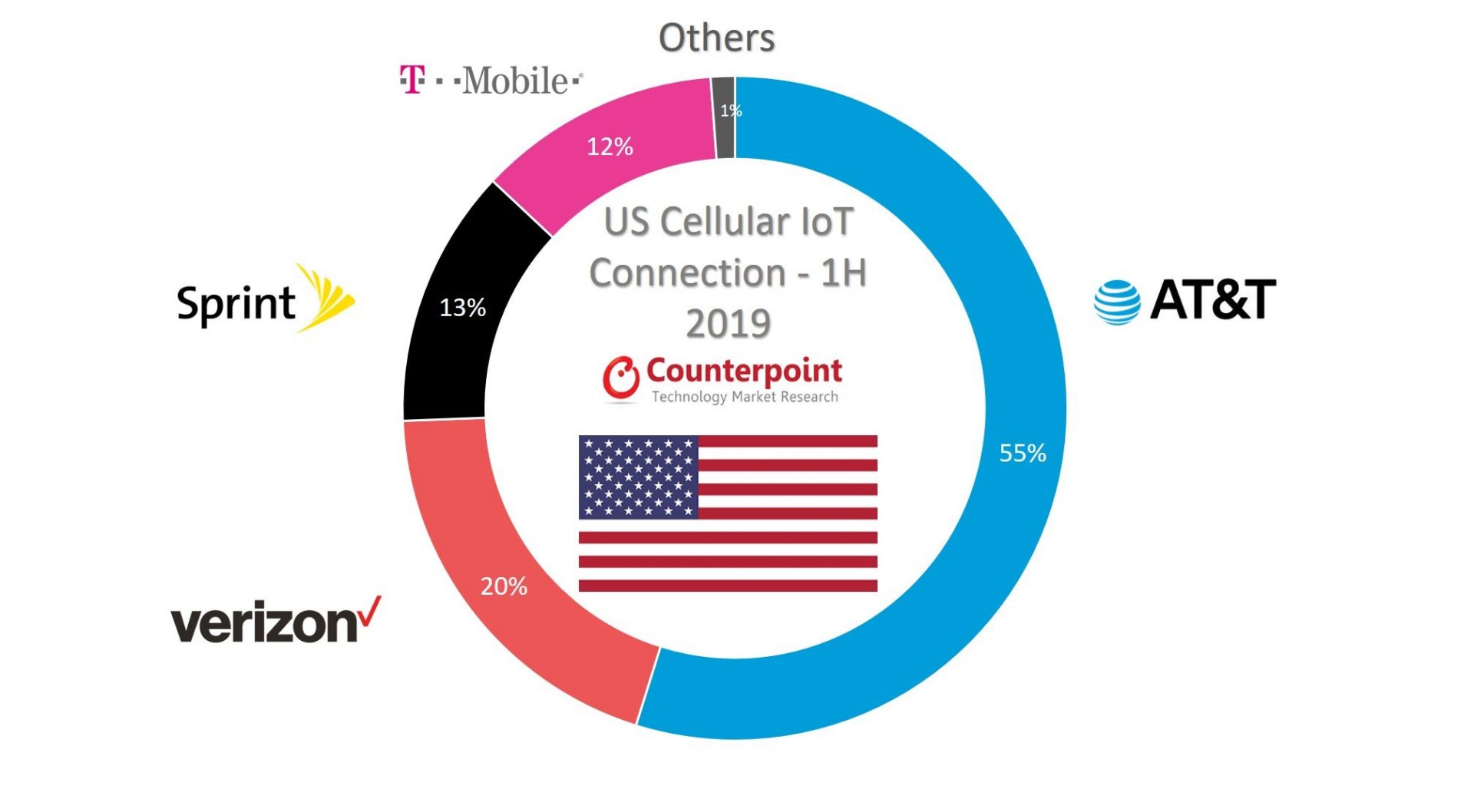• Automotive and Transport & Logistics contributed to nearly half the total connections
• AT&T continues to lead, accounting for almost 55% of the total cellular-IoT connections in the US
Cellular-IoT connections in the US grew 20% year-on-year (YoY) in H1 2019, and we expect they will grow by 21% YoY for the full year 2019, driven by automotive, transport & logistics, and wearables with cellular connectivity, according to the latest research from Counterpoint’s IoT (Internet of Things) service.
In the future, 5G will play an increasingly important role in some high-bandwidth and low-latency applications such as autonomous cars, drones, high-definition smart surveillance cameras, and industrial IoT, but for now, most cellular IoT connections are based on 2G/3G and 4G LTE technologies.
Commenting on the cellular service providers’ IoT deployment strategies, Counterpoint’s Research Analyst, Satyajit Sinha, noted, “On average, for a cellular-IoT solution deployment, connectivity accounts for around 12% of the value, whereas hardware components, modules, and devices make up 22%. The rest of the value in an IoT solution is captured by system integrators, middleware, software platforms, and cloud analytics vendors. Hence, AT&T, Verizon, Sprint and T-Mobile are looking to capture maximum value by providing end-to-end IoT solutions, bundling IoT devices, secure connectivity, platform, and data management to capitalize on the overall opportunity.”
Sinha, further added, “The trend for partnerships among players in the IoT ecosystem is not something new, however, the partnership of network operators and cloud players is creating headlines in 2019. AT&T and Microsoft forged a multi-year alliance to provide cloud services and edge computing solutions. Through this alliance, AT&T’s objective is to migrate most non-network workloads to the public cloud by 2024 and focus on core network capabilities. Similarly, Sprint partnered with AWS to integrate cloud services with its Curiosity IoT platform for edge computing solutions.”
Exhibit 1: US Cellular-IoT Connection Share by Service Provider, 1H 2019

Source: Counterpoint Research: 2010-2025 US Cellular-IoT Connection Tracker and Forecast
Adding his perspective, Research Director, Jeff Fieldhack, noted, “In the US, cellular IoT connectivity has been modest so far unlike in China. But we expect the dual-cellular LPWA (LTE-M + NB-IoT) strategy by US service providers will further drive cellular-IoT connections. We will see a decline in legacy connections (2G/3G), as most of the earlier M2M (machine-to-machine) type applications will migrate to LPWA networks. Further, we expect the automotive segment to continue to lead in terms of cellular IoT connections and the segment will leverage 4G LTE and upcoming connectivity.”
Exhibit 2: US Cellular-IoT Connection by Application Market Share in 1H 2019

Source: Counterpoint Research: 2010-2025 US Cellular-IoT Connection Tracker and Forecast
The comprehensive and in-depth report on “ US Cellular-IoT Connection Tracker CY 2010-2025” is a part of our IoT (Internet of Things) service.
• This report is available for download here

























